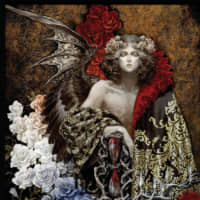Vampires do not have a traditional place in Japanese literature, falling outside the canon of well-developed, gruesome monsters that emerged largely from Buddhism.
Vampiric: Tales of Blood and Roses from Japan, Edited by Heather Dubnick.
238 pages
KURODAHAN PRESS, Fiction.
They didn't make their mark until the early 20th century, when literature from the West began to be translated by writers here. Ryunosuke Akutagawa's 1914 translation of Theophile Gautier's "La Morte Amoureuse" is given some credit for their introduction and the Japanese word for vampire, "kyūketsuki," appeared the following year, in an article by naturalist Kumagusu Minakata. But the creature was not immediately embraced.
It was not until Christopher Lee's performance of the titular character in the 1958 film " Horror of Dracula" that the castle gates were opened and vampires were pushed into the light of day.
"Vampiric" brings together 15 short stories about vampires from Japanese writers in translation. Like their counterparts in the West, the vampires depicted are handsome creatures, pale reflections of the darker side of humanity. They are sexual symbols — often ambiguous in orientation — luring their prey with guile, charm and good old-fashioned looks.
The settings, however, are Japanese. Take "The Stone Castle," which puts its hero in the afflicted village of Saruta, upon which a figure cloaked in black feeds from his castle atop Mount Happo. Conceptually the story is familiar, but the added detail — a quest for a sword master, manipulation of bushido loyalties — situates the story firmly in Japan.
Wrapped up with introductions by academics Raechel Dumas and Masaya Shimokusu, this is a neat introduction to Japan's vampiric literature.



